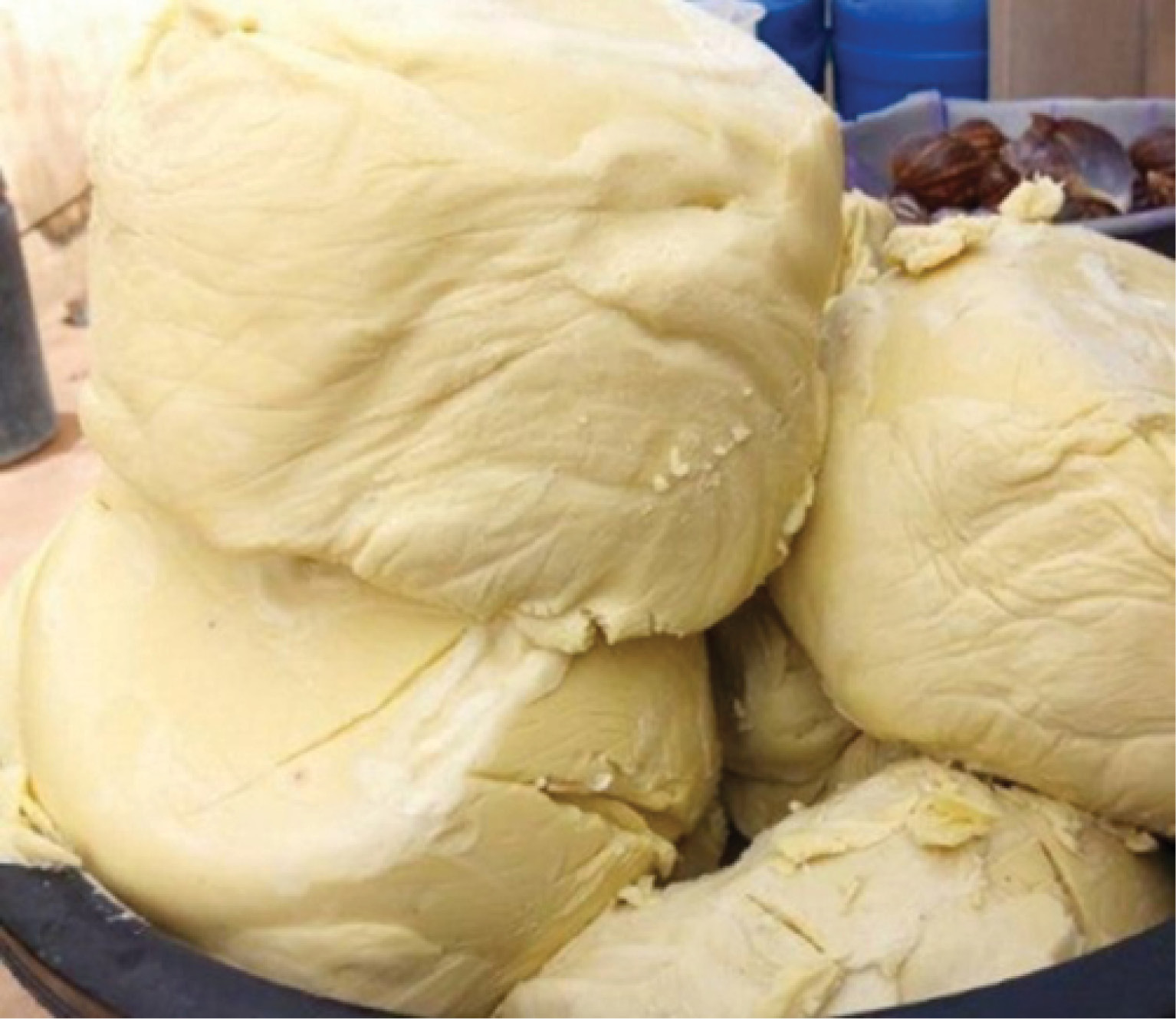Why Nigeria is not doing well in shea butter production
One of the areas requiring indigenous technology upgrade in Nigeria is the development of the shea nut value chain. The shea nut tree is a major agricultural resource that has been contributing to poverty alleviation in the country. Stakeholders in the shea nut value chain believe that the major problem limiting the growth of the […]

Shear-butter
One of the areas requiring indigenous technology upgrade in Nigeria is the development of the shea nut value chain. The shea nut tree is a major agricultural resource that has been contributing to poverty alleviation in the country.
Stakeholders in the shea nut value chain believe that the major problem limiting the growth of the enterprise is that more than 98 per cent of the processors are indigenous people using indigenous technology to process the nut to butter, coupled with underdevelopment of the shea tree.
This, according to Mallam Yinusa Abdulhamid, an agriculturist, limits the competitiveness of the product in both local and international markets.
He said that as a result of this, the value chain had remained grossly underdeveloped.
Obaseki remains my friend despite political differences – Oshiomhole
Afrobeat Top Gems, Wizkid and Davido’s Baby Mamas
“This necessitated the need for spirited efforts to be made to upgrade the indigenous technology of shea butter production and to improve on the productivity of the tree.
Why FG should pay more attention to shea nuts value chain
According to a document from the Raw Material Research Development Council (RMRDC), shea trees grow naturally in about 21 of the 36 states in Nigeria. The kernels contain about 42 to 48 per cent oil, which has tremendous skin care, healing and medicinal properties, which makes its demand in various industries very high.
The butter is ideal for use as raw materials in the food, pharmaceutical and cosmetic industries. It is used as cooking oil, in baking and production of chocolate, margarine, cosmetics, soap, detergents, paints, lubricants, paints and candles due to the presence of solid fat (stearin) and liquid oil (olein).
Due to the low fat content, it is popularly being used as a substitute for cocoa and palm oil. Its use as cocoa butter substitute is derived from its melting point, which is between 32 and 45°C and high amounts of distearin (30%) and stearo-palmitine (6.5%), which makes it blend with cocoa butter without altering the flow of properties.
According to the 2023 report of the Custom Market Insights, the global shea Butter market was estimated at USD2.5billion in 2021 and rose to USD2.8 billion in 2022. It is anticipated to rise to USD 5.2bn by 2030 at a CAGR of roughly 8 per cent between 2022 and 2030.
Nigeria has the largest shea belt in the world, and it is recognised as the world’s leading producer of shea nut with a global production of about 45 per cent. The documented annual production is between 330,000mt and 350,000mt, while the potential production is estimated at 800,000mt as at 2019. However, out of the 800,000mt of shea nuts produced in Nigeria, only 20,000mt is processed into butter, while the rest are exported to neighbouring West African countries. This is due to the inability of shea butter produced in Nigeria to meet international standard.
In Nigeria, rural women process the nuts into butter using traditional methods. The traditional method involves a series of operations. However, some of these are detrimental to products quality.
We have initiated projects to overhaul the value chain – RMRDC
To address these shortcomings, the RMRDC said it had initiated projects to overhaul the shea nut value chain in the country. Among these are upgrading the indigenous technology used in shea butter production and productivity improvement of the shea nut trees locally.
The council said it had developed and fabricated the equipment for shea nut processing, which has been installed in Agbaku-eji, Kwara State for the Araromi Women Cooperative Society and Amanawa Shea Butter Women Cooperative Society, Kebbi State.
The council said it had established a model shea nut processing centre in Gawu village, Abaji Area Council of the Federal Capital Territory (FCT). This is being used as a training centre for shea nut processors in the FCT and surrounding states.
Since the beginning of the exercise, the council said over 500 women and youths had been trained on the best practices for shea kernel production and processing, butter production, and production of shea-based cosmetics and cosmeceuticals in the North West and North East geopolitical zones of the country and the FCT.
According to the director-general of the RMRDC, Professor Ibrahim D. Hussaini, one of the major problems militating against the optimal development of the shea nut value is the absence of plantations. He said most gatherers depended on shea trees from the wild.
To encourage plantation establishment of shea trees and consequently, reduction in the long gestation period associated with sheanut trees, the RMRDC, in collaboration with the National Centre for Genetic Resources and Biotechnology (NACGRAB), Ibadan, embarked on germplasm development studies to aid the domestication and improvement of seed handling techniques of shea tree.
In addition, seed handling training workshops were held for shea nut farmers and processors associations.
In a related development, improved shea nut seedlings with 5 to 7-year gestation period have been developed by the National Institute for Oil palm Research (NIFOR), Benin.
Professor Hussaini said a pilot plantation had been established by the council using the seedlings. This is to demonstrate the possibility of domesticating the shea tree.
He said for further optimal development of the shea industry in Nigeria, the council, in collaboration with the National Shea Products Association and other stakeholders had developed a roadmap for the sector. This had been adopted as a working document for all operators in the sector.
